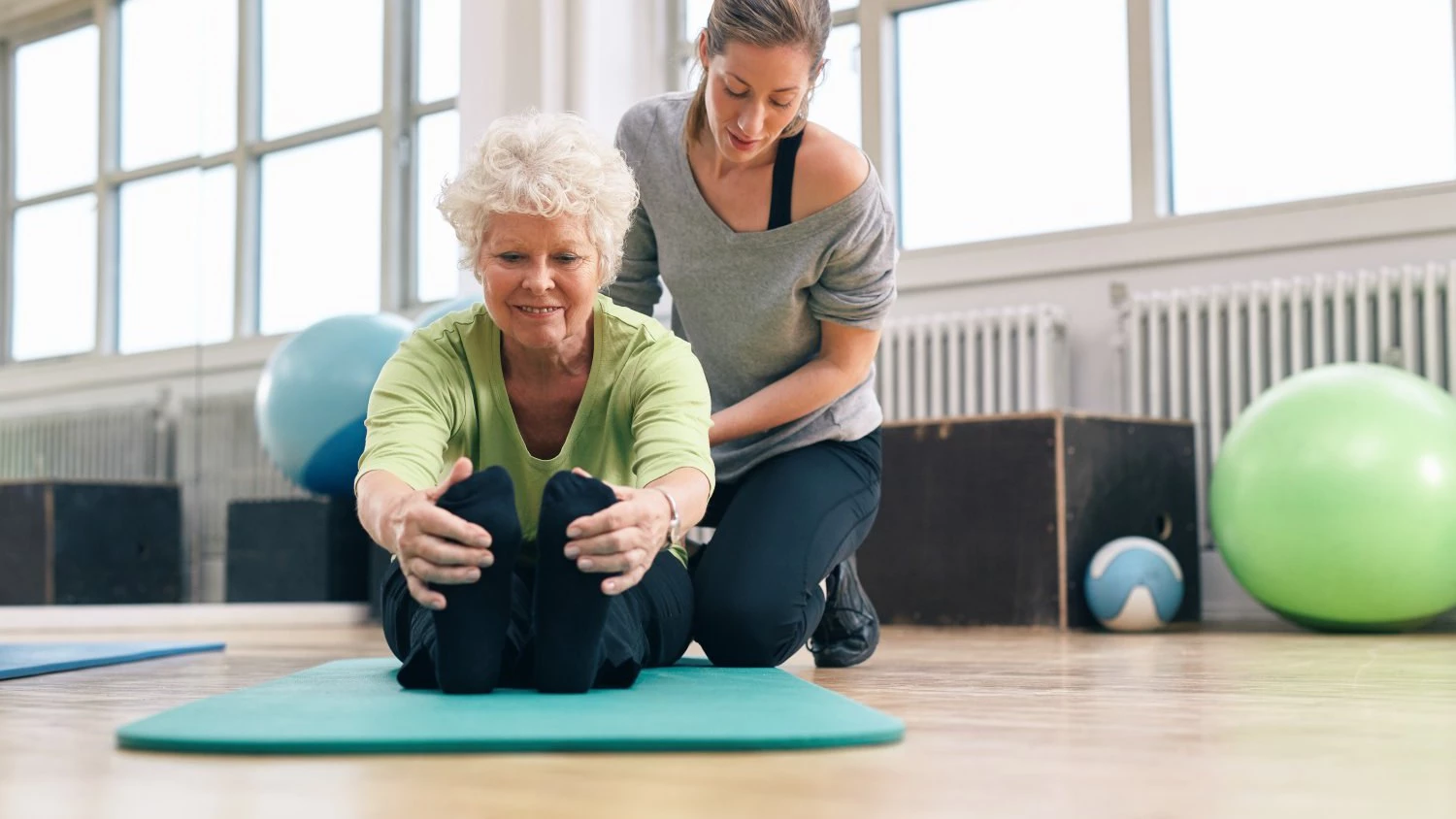How Does Yoga Help Reverse Hyperkyphosis?

According to studies, yoga shows promise as therapy to reverse hyperkyphosis, or age-related dowager’s hump in the elderly. This is significant, because the hunched back of hyperkyphosis is one of the most overlooked health problems in today’s society.
The condition has long been ignored, because it was previously thought that the hyperkyphotic dowager’s hump resulted from tiny fractures of the vertebrae caused by osteoporosis. However, recent reviews of studies on the hyperkyphosis show that the hunched back of dowager’s hump presents a serious health risk in and of itself.
In its early stages, hyperkyphosis shows up as forward head posture, in which the head’s position moves forward of the gravitational center line of the body. As the head moves forward, the shoulders typically begin to get rounded as well. Over the long term, forward head posture often develops into full-fledged hyperkyphosis, or dowager’s hump.
Elderly with hyperkyphosis are more likely to suffer fractures of the hip, leg, wrist, shoulder, and arm; the more rounded the back, the greater the risk. The stooped forward posture also puts pressure on the chest and lung cavity, causing shortness of breath. In the elderly, shortness of breath is linked to numerous health issues, including increased anxiety and depression, reduced happiness, increased risk of cardiovascular or lung disease, and Type 2 diabetes.
There are currently no medical treatments for hyperkyphosis per se. A surgical procedure known as kyphoplasty is used to relieve pain caused by osteoporotic fractures in the upper spine. However, while kyphoplasty may bring pain relief from the fractured vertebrae, it cannot correct the spinal deformity of hyperkyphosis. In addition, it carries with it risk of nerve damage or spinal cord injury, and it is unknown whether it may increase the number of fractures at adjacent levels of the spine.
In an early pilot study conducted by Greendale, the researchers included 4 series of yoga therapy poses, which had been modified from the classical forms of yoga to accommodate the physical constraints of the women in the study. The poses targeted muscles and joints particularly affected by hyperkyphosis (shoulders, spinal erectors, abdominals, and neck).
The four series of poses included in each yoga therapy session progressed to increasing levels of difficulty during the study period. The first series started out on the floor, and included Yoga breathing, “rolling the shoulders back,” and isolated movements of the arms, legs, and abdomen. In the second series, exercises on hands and knees aimed at increasing balance, core strength, and the ability to coordinate movements of arms and legs with the stability of the trunk. The third series involved back bends lying on the stomach to strengthen back muscles and stretch the shoulder and hip girdles. Lastly, the fourth series introduced simple standing poses, involving all muscle groups, which trained the overall strength, flexibility, and balance of participants.



